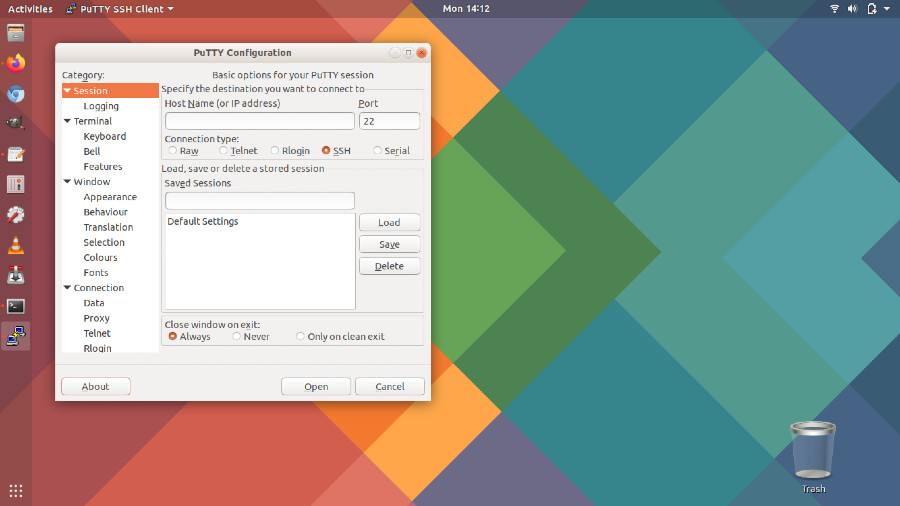How to install PuTTY on Linux Ubuntu. PuTTY is an SSH and telnet client. PuTTY is a free implementation of SSH and Telnet for Windows and Unix platforms, along with an xterm terminal emulator.
What is PuTTY?
PuTTY is a client program for the SSH, Telnet and Rlogin network protocols.
These protocols are all used to run a remote session on a computer, over a network. PuTTY implements the client end of that session: the end at which the session is displayed, rather than the end at which it runs.
In really simple terms: you run PuTTY on a Windows machine, and tell it to connect to (for example) a Unix machine. PuTTY opens a window. Then, anything you type into that window is sent straight to the Unix machine, and everything the Unix machine sends back is displayed in the window. So you can work on the Unix machine as if you were sitting at its console, while actually sitting somewhere else.

Install PuTTY on Linux Ubuntu
Run the following commands to install PuTTY on Linux Ubuntu Systems:
$ sudo apt-get upgrade
$ sudo apt-get update
$ sudo add-apt-repository universe
$ sudo apt-get update
$ sudo apt install putty
Using PuTTY
When you start PuTTY, you will see a dialog box. This dialog box allows you to control everything PuTTY can do.
PuTTY is configured using the control panel that comes up before you start a session. Some options can also be changed in the middle of a session, by selecting ‘Change Settings’ from the window menu.
You don’t usually need to change most of the configuration options. To start the simplest kind of session, all you need to do is to enter a few basic parameters.
In the ‘Host Name’ box, enter the Internet host name of the server you want to connect to. You should have been told this by the provider of your login account.
Now select a login protocol to use, from the ‘Connection type’ buttons. For a login session, you should select Telnet, Rlogin or SSH. The fourth protocol, Raw, is not used for interactive login sessions; you would usually use this for debugging other Internet services. The fifth option, Serial, is used for connecting to a local serial line, and works somewhat differently.
When you change the selected protocol, the number in the ‘Port’ box will change. This is normal: it happens because the various login services are usually provided on different network ports by the server machine. Most servers will use the standard port numbers, so you will not need to change the port setting. If your server provides login services on a non-standard port, your system administrator should have told you which one.
Once you have filled in the ‘Host Name’, ‘Protocol’, and possibly ‘Port’ settings, you are ready to connect. Press the ‘Open’ button at the bottom of the dialog box, and PuTTY will begin trying to connect you to the server.
LEGAL WARNING: Use of PuTTY, PSCP, PSFTP and Plink is illegal in countries where encryption is outlawed. We believe it is legal to use PuTTY, PSCP, PSFTP and Plink in England and Wales and in many other countries, but we are not lawyers, and so if in doubt you should seek legal advice before downloading it. You may find useful information at cryptolaw.org, which collects information on cryptography laws in many countries, but we can’t vouch for its correctness.
Use of the Telnet-only binary (PuTTYtel) is unrestricted by any cryptography laws.
